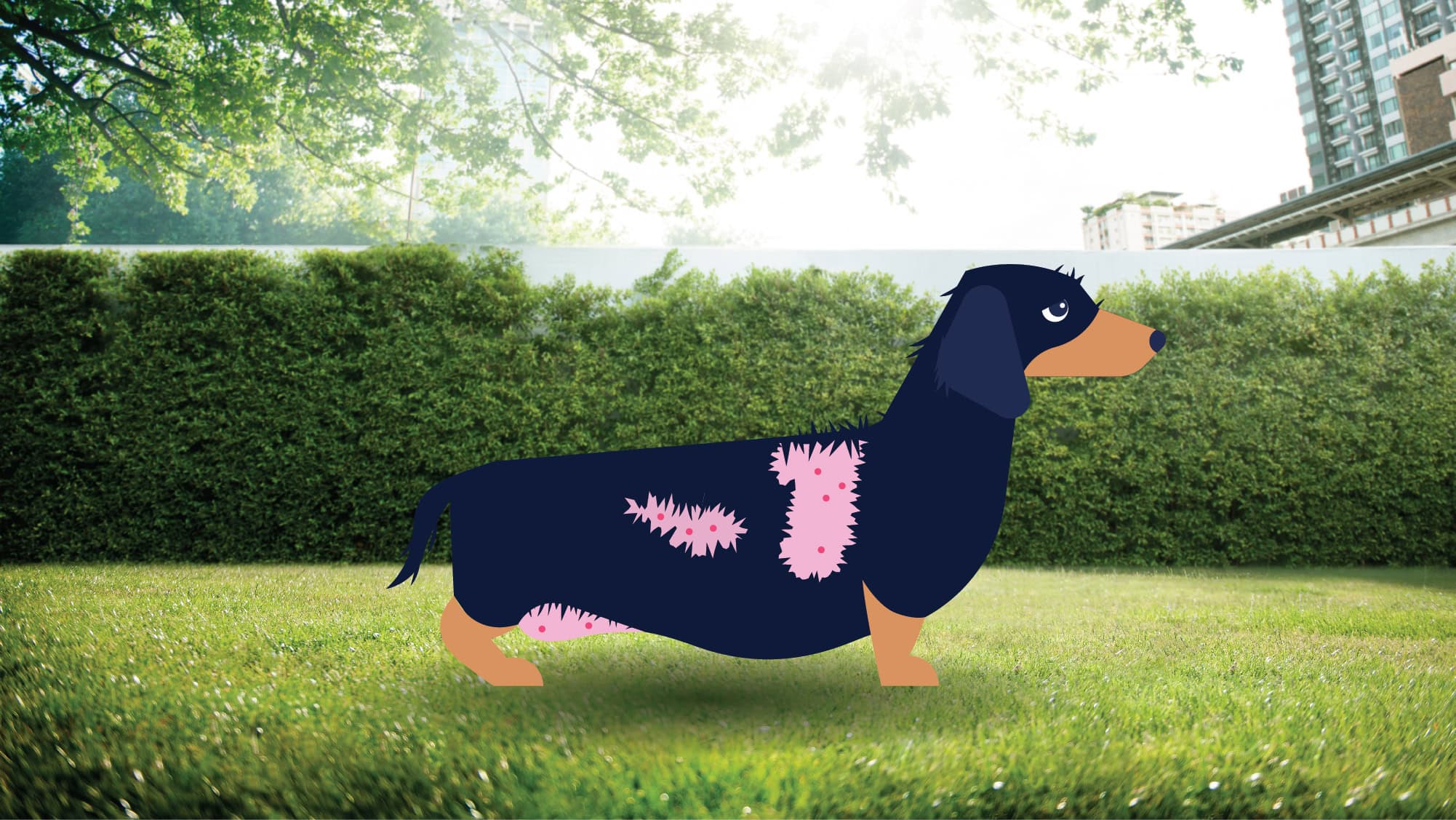Whenever you’ve got a poor pooch, it’s a real worry, and you’re bound to have lots of questions about your pet’s condition, the treatment options, and the expected recovery. The veterinary team will do their very best to help you understand your pet’s condition and support you through the treatment.
Some hormonal conditions like Diabetes, Addison’s, and Cushing’s Disease in dogs can be quite complicated and tricky to get your head around. We’ve compiled this information to help you understand Cushing’s Disease better.
What is Cushing’s Disease in Dogs?
Cushing’s Disease is the common name given to a hormonal condition called hyperadrenocorticism. It’s also a condition in humans. Dogs with Cushing’s have overactive adrenal glands that produce too much of the stress hormone, cortisol.
What Causes Cushing’s Disease in Dogs?
Cushing’s Disease is caused by too much cortisol being produced by the adrenal glands. The reason for this could be an overgrowth of cells (a microadenoma) in the pituitary gland of the brain, that sends signals to the adrenal glands to release more cortisol.
However, sometimes the cause is a tumor within one of the adrenal glands, which makes more cortisol than is needed by the body. Very rarely, Cushing’s Disease in dogs can be caused by over-use of steroid medication. This is known as iatrogenic Cushing’s Disease.
Related reading: Mast Cell Tumors in Dogs
Symptoms of Cushing’s Disease in Dogs
Cushing’s Disease causes an excess of cortisol, the stress hormone. Too much cortisol causes changes within the skin, so it becomes paper thin with blackheads (comedones) and no fur. It also causes excessive panting, excessive thirst, and a ravenous appetite.
You might notice that your dog has become a little pot-bellied, or that they don’t seem as muscular as they used to. All that drinking often leads them to pee a lot, so you might assume they’re incontinent or have a urinary tract infection.
How is Cushing’s Disease Diagnosed?
To investigate whether your dog has Cushing’s Disease, the veterinarian might suggest measuring how much they drink in 24 hours and testing a urine sample.
If these findings suggest Cushing’s is possible, they may take a blood sample to assess the liver parameters, since these are commonly raised in dogs with Cushing’s.
The only way to get a conclusive diagnosis, though, is to perform a dynamic blood test like the ACTH stimulation test or Low Dose Dexamethasone Suppression Test (LDDST). These tests involve taking a blood sample then giving an injection, then taking another blood sample to assess the body’s response to the injection. The LDDST can also determine whether Cushing’s is caused by a tumor in the adrenal gland or the pituitary gland.
Can Cushing’s Disease Be Treated?
Cushing’s Disease can be treated with a medication called Trilostane (Vetoryl). This medication works by targeting and damaging the adrenal tissue, to reduce the amount of cortisol it can produce.
The medication needs to be started at a low dose and gradually increased. This is to reduce the chance of side effects and prevent causing their cortisol levels from dropping too far.
Side effects can include diarrhea, vomiting, and lethargy, and you should speak to your veterinarian urgently if you notice them. If your dog is on Trilostane, they will need regular blood tests to check that the dose is correct.
Dogs with Cushing’s Disease who are left untreated often develop canine Diabetes due to insulin resistance and may develop congestive heart failure, painful skin conditions, or persistent infections due to a weakened immune system.
Frequently Asked Questions
What are the first signs of Cushing’s Disease in dogs?
The first symptoms you might notice if your dog has Cushing’s Disease are excessive thirst and peeing and panting more than usual. As time goes on your might notice hair loss, thin skin, and a pot-bellied appearance. If your dog has been panting a lot, but you don’t think it’s Cushing’s, why not read our blog post on how to calm your panting dog?
How long can a dog live with Cushing’s Disease?
Most dogs can live with Cushing’s Disease for a while, even without treatment. However, the strain on their circulation, the weakened immune system, and the insulin resistance often lead to complications after a year or two. With treatment, Cushing’s can be controlled, and dogs can have a normal life expectancy.
What does Cushing’s Disease do to a dog?
Cushing’s Disease causes a dog’s adrenal glands to produce too much cortisol, which is a stress hormone. This hormone is responsible for the body’s stress response, so it puts stress on the cardiovascular system, causes insulin resistance, and weakens the immune system. In the short term, you might notice your dog eating and drinking a lot and panting and peeing a lot.
Summary
Not all dog health conditions are easy to understand, especially when you’re feeling stressed and emotional because your furry family member is unwell. Hopefully, the information above will help you get a better grasp on Cushing’s Disease in dogs. If you have any questions or concerns, though, your veterinarian will be happy to help.





